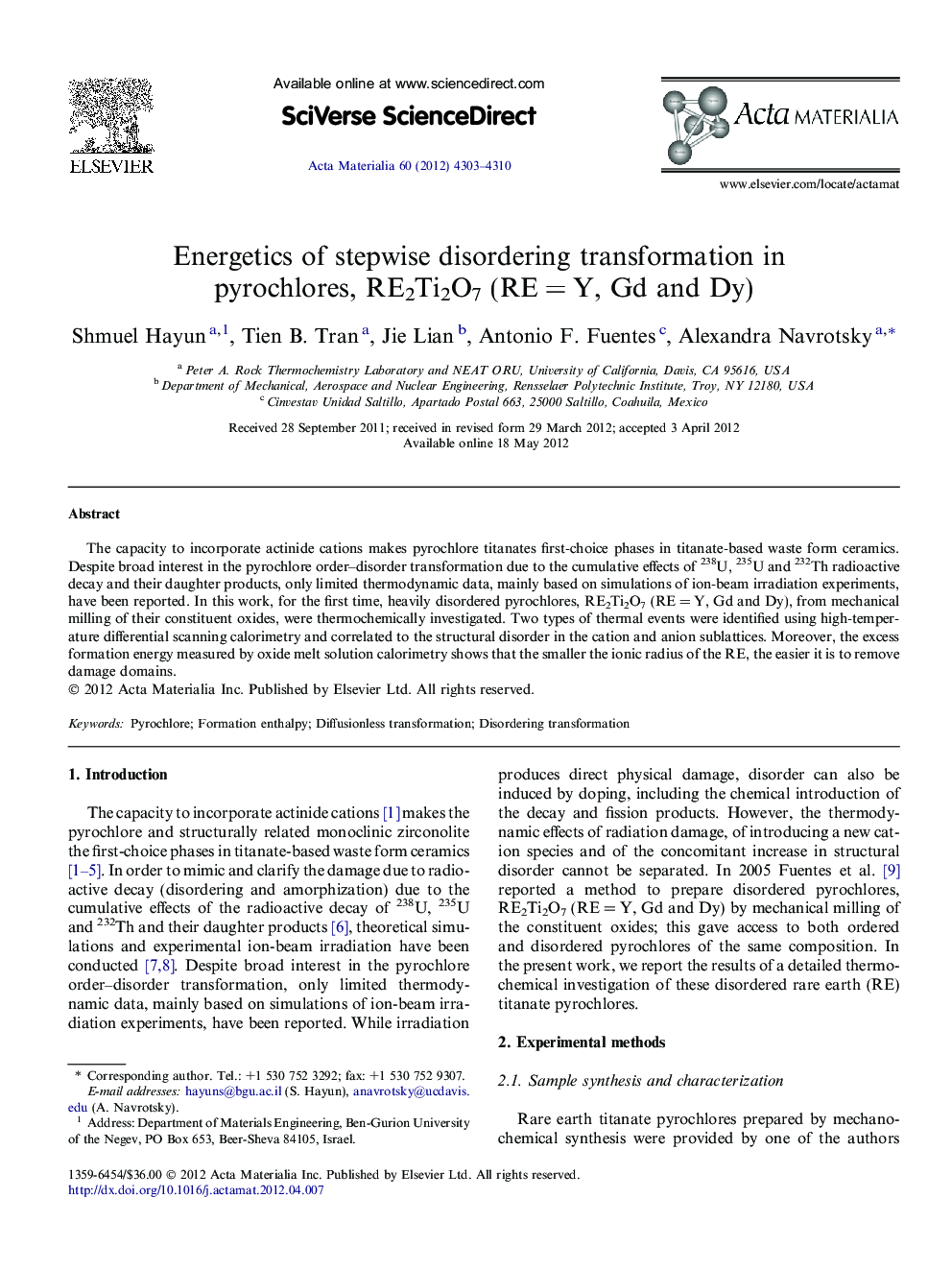| Article ID | Journal | Published Year | Pages | File Type |
|---|---|---|---|---|
| 1446677 | Acta Materialia | 2012 | 8 Pages |
The capacity to incorporate actinide cations makes pyrochlore titanates first-choice phases in titanate-based waste form ceramics. Despite broad interest in the pyrochlore order–disorder transformation due to the cumulative effects of 238U, 235U and 232Th radioactive decay and their daughter products, only limited thermodynamic data, mainly based on simulations of ion-beam irradiation experiments, have been reported. In this work, for the first time, heavily disordered pyrochlores, RE2Ti2O7 (RE = Y, Gd and Dy), from mechanical milling of their constituent oxides, were thermochemically investigated. Two types of thermal events were identified using high-temperature differential scanning calorimetry and correlated to the structural disorder in the cation and anion sublattices. Moreover, the excess formation energy measured by oxide melt solution calorimetry shows that the smaller the ionic radius of the RE, the easier it is to remove damage domains.
Graphical abstractThe transformation from disordered to more order state in the pyrochlore system go through multiple energetics steps; the cation sublattice rearrangement is control by the diffusion of the cations while the anion sublattice display an irreversible transformation from a disordered to a higher-ordered state via diffusionless transformation.Figure optionsDownload full-size imageDownload high-quality image (120 K)Download as PowerPoint slide
